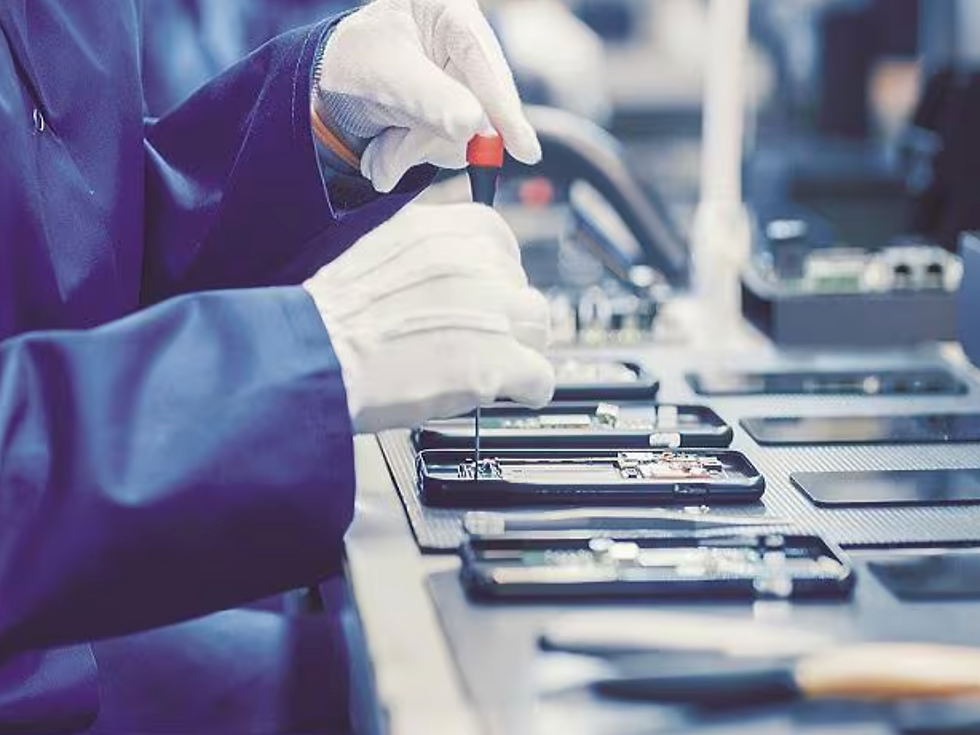Why are iPhones Expensive?
- Kokoro Maruyama
- Aug 18
- 3 min read
Over the course of last year, over 225 million iPhones were shipped worldwide. It is a total global sensation in which sales are only growing (Apps, 2021). A bizarre thing to note is that the average iPhone goes for a price of 999 USD, while higher-end models can go up to 1500 USD.
The actual cost to develop an iPhone is much lower (Apps, 2021). iPhones are a clear premium product that is marketed for the general public instead of a niche market for high-income consumers, and yet they still sell tremendously well. This raises the question of why iPhones are so expensive in the first place.
According to Apple, it costs roughly 460 USD to build an iPhone, meaning Apple could easily market the product at a cheaper price. But perhaps there is an economic reason why it’s nearly double or triple the cost (Apps, 2021). This article will explore the economics behind why an iPhone is marketed at such an unnecessarily high price.
What impacts how the iPhone is priced
While the cost of production is one of the main factors in how a product can be priced, there are many other factors, such as research and development, marketing, and transportation costs, that lead to the high price of the product.
Due to Apple’s advanced technology, such as their cameras and iOS features that constantly improve or advance each year, there are many improvements made in an iPhone that lead to rising costs. Being a worldwide sensation, how Apple markets its brand is a huge factor in how they make sales and raise brand awareness and development. Spending 64 billion USD towards this is evidence of how such huge costs can lead to driving up the prices of products to still make a net profit.

Where are iPhones Produced?
Although Apple has its main headquarters in the United States, most of the production and assembly is split across several countries, with the main production center being in China. The first step of production is the research and development processes that take place in California. After running test trials to try out different hardware and features, they then come up with the final product. To get their parts, Apple uses chips from Taiwan and displays from South Korea to start assembling the iPhone. The actual assembly of the product takes place in China and India, where iPhones can be manufactured in bulk in large factories. Apple then finally tests the software in the new phones to ensure good quality. After this whole process, they package and ship to the rest of the world.
This large and complex process ensures the highest quality and security, which explains why the cost of an iPhone to make and transport can be so high. Although the product benefits from positive economies of scale, meaning that even if the iPhone is being produced at such a pace, the output costs can keep up (India, 2022).
The Use of an iPhone
At this point, the iPhone isn’t just a product that consumers want to have; it is a necessity that you need to get through your daily life. Not only that, it is the main communication device that we use, which is why their sales are so high and are unlikely to drop. This contributes to the fact that Apple could increase their product price intentionally, and consumers would still buy it, making it an inelastic product.
By considering these internal and external factors, it explains why the prices of iPhones are so premium.
Works Cited
Apps, B. of (2021). Apple Statistics (2025). [online] Business of Apps. Available at: https://www.businessofapps.com/data/apple-statistics/ [Accessed 12 Jul. 2025].
India (2022). Apple kicks off iPhone 13 production in India through Foxconn. [online] @bsindia. Available at: https://www.business-standard.com/article/technology/apple-kicks-off-iphone-13-production-in-india-through-foxconn-122041100322_1.html [Accessed 25 Jun. 2025].
India (2022). Apple kicks off iPhone 13 production in India through Foxconn. [online] @bsindia. Available at: https://www.business-standard.com/article/technology/apple-kicks-off-iphone-13-production-in-india-through-foxconn-122041100322_1.html [Accessed 25 Jun. 2025].
.png)





Comments